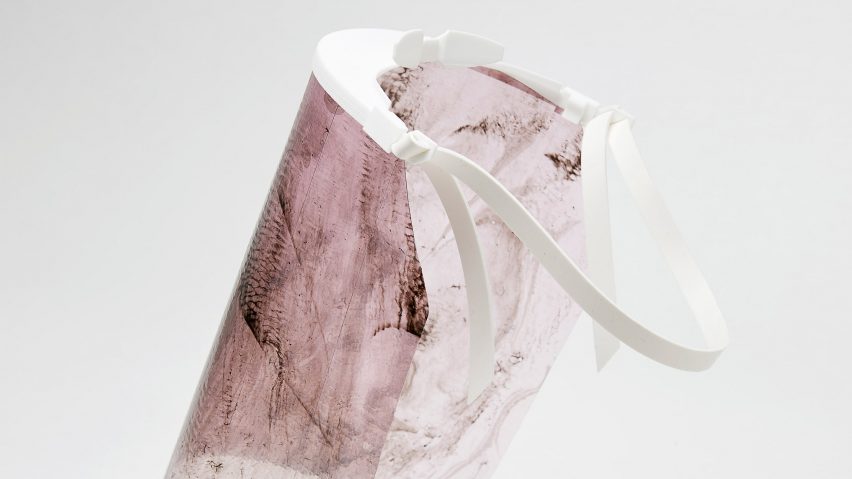
Alice Potts makes bioplastic face shields from food waste
Designer Alice Potts combined food waste with flowers from London parks to create a series of bioplastic face shields for the NGV Triennial.
Potts made the face shields, which she claims are biodegradable, from food waste collected in London as an alternative to the many items of personal protective equipment (PPE) that are made from single-use plastic.
Named Dance Biodegradable Personal Protective Equipment (DBPPE) Post Covid Facemasks, the face shields will be on show at the NGV Triennial at the National Gallery of Victoria in Melbourne.
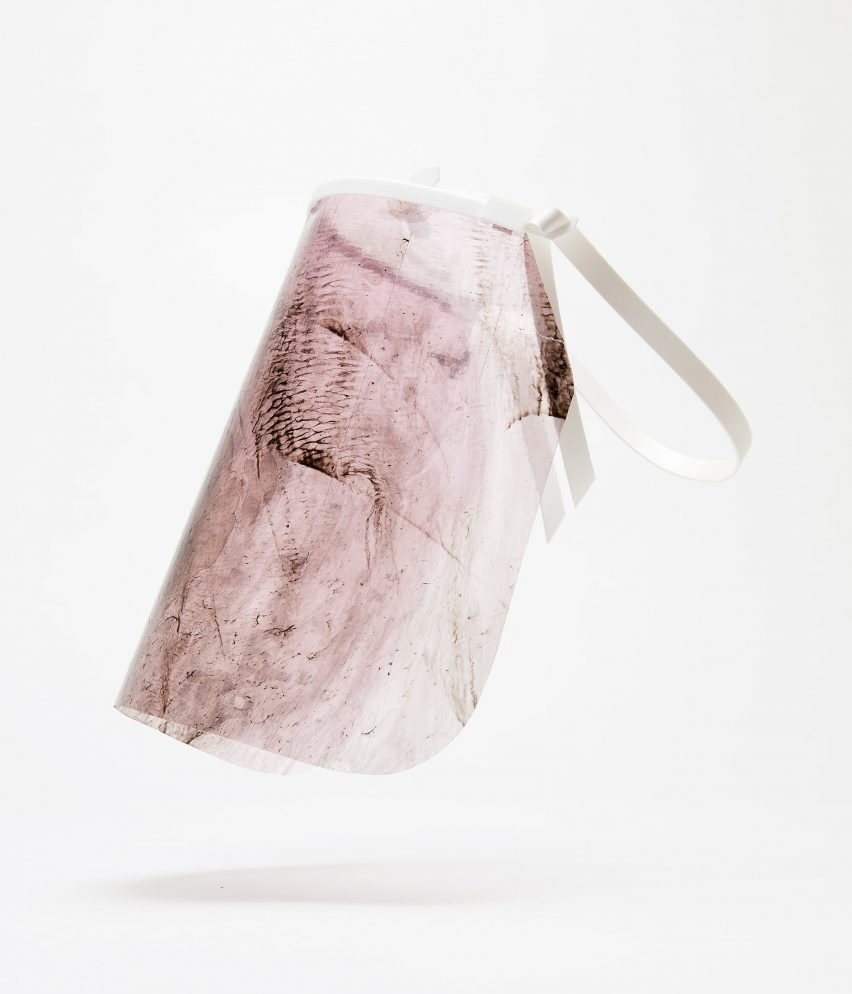
The designer created 20 face shields for the triennial that each have a 3D-printed top section combined with a biodegradable, bioplastic shield. The colour and exact structure of each shield is dependant on the food it is made from and the flowers it is dyed with.
"The food waste is the base, and type of colour depends on the type of waste thrown out," Potts told Dezeen. "This is normally collected by me from local food markets, butchers and households."
"Most vegetables can be made into the dyes with fruits acting as a natural sugar for flexibility in the bioplastic, whereas proteins can be used to give strength to the plastic itself," she continued.
"Every colour is completely seasonal depending on what flowers are blooming, what vegetables and fruits are growing and earth that is in and around London."
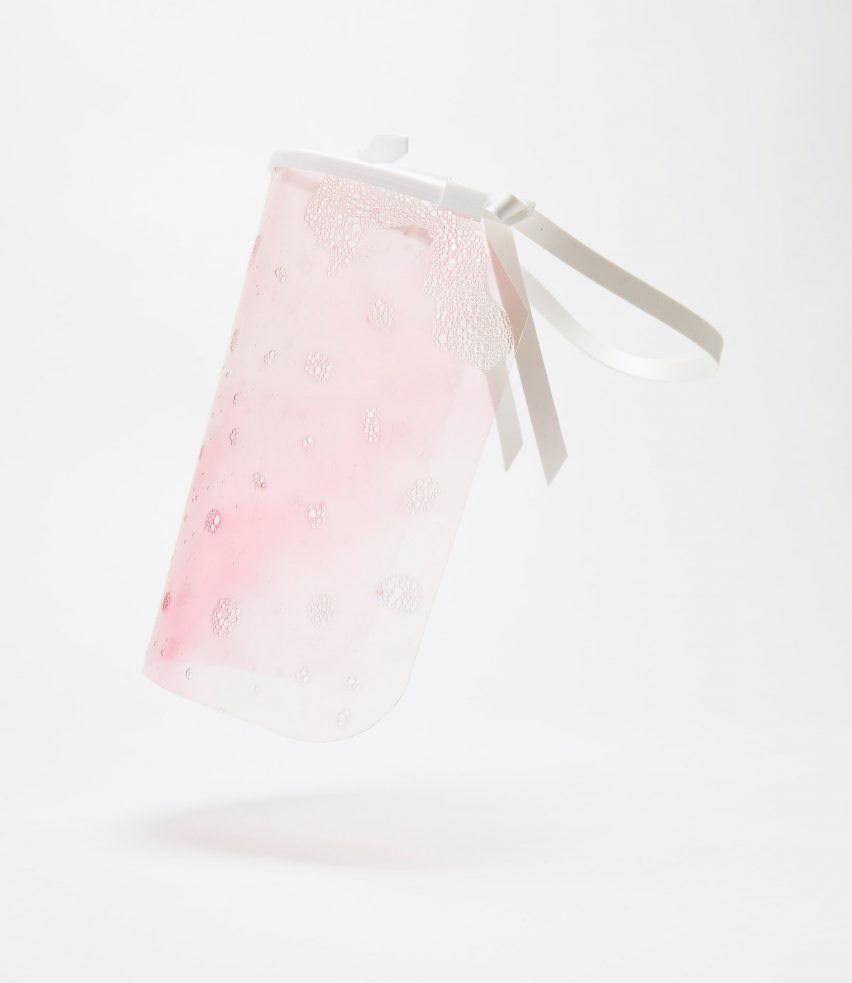
Once the face shields are placed on display at the triennial in December, Potts will make the designs and bioplastic formula available to everyone as an open-source design.
"I want to combine the advantages of technology with sustainability to form a template of the top of a face shield that can be 3D printed from recycled plastic with a bioplastic recipe for the shield for people to make at home," she said.
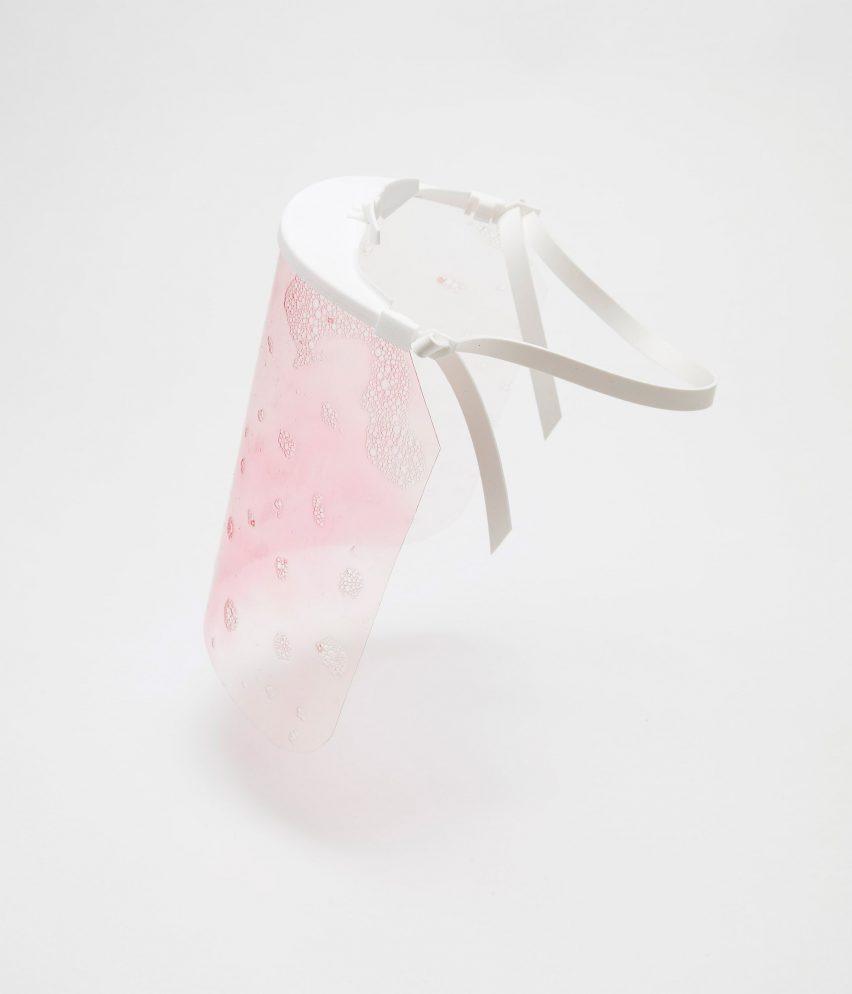
Potts believes that biodegradable face shields could be a more environmentally-friendly alternative to plastic face shields, which have begun having an impact on our environment as "covid-waste".
"Plastic is an amazing material and has allowed us to travel to outer space, deep-sea dive and make the ventilators, which we now need more than ever to save lives," said Potts.
"However, for everyday consumers, I don't think it's essential to have such a material like plastic for everyday use. We are not exposed to the same level of Covid as those in the hospitals or on the frontline, so we do not need the same material."
"Bioplastic will still offer some levels of protection but will be biodegradable."
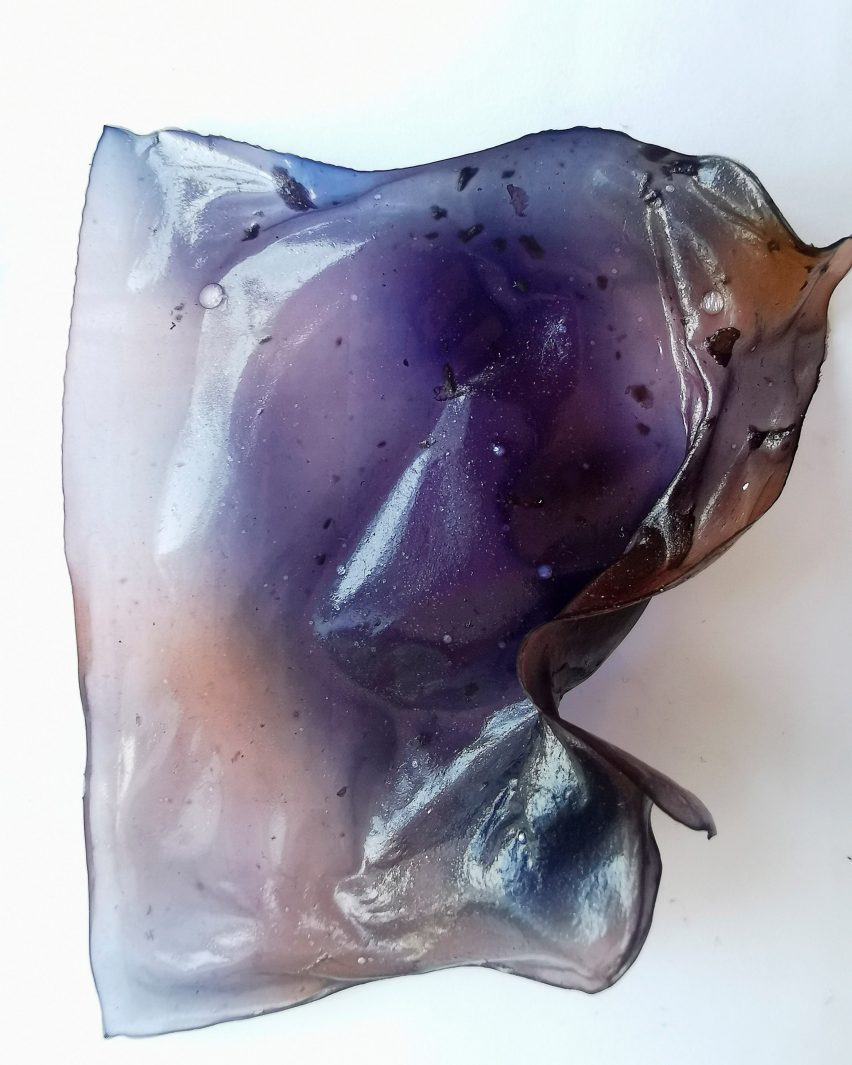
The designer believes that, as CO2 emissions have gone up again after going down during lockdown, we also have to be more aware of our impact on the environment.
"Single-use plastic will be needed and I think we need to learn to recycle and reuse it first, but there is something very beautiful about either a mask, furniture or fashion piece that is in fact completely seasonal," she said.
Potts began her project after her brother, a paramedic, reported having a lack of personal protective equipment (PPE) at the beginning of the pandemic.
"I began creating the masks firstly in response to the stories of lack of PPE from my brother who is a paramedic and volunteers in care homes, before tackling the sustainability side of single-use plastic," said Potts.
"I think I speak for us all that at the beginning of the pandemic it was hard seeing someone who you knew or loved working and struggling through the crisis."
Potts has been experimenting with developing materials for years and previously created garments decorated with crystals made from human sweat.
Her face shields are among 30 new works commissioned by the National Gallery of Victoria, which will feature 87 projects by more than 100 artists, designers and collectives from 33 countries.
Artist and designer Porky Hefer also contributed works that explore our impact on the environment with his five mutant sea creatures that warn against ocean pollution.
Photography is by James Stopforth.
DBPPE is on view at NGV International in Melbourne from 19 December 2020 to 18 April 2021. See Dezeen Events Guide for an up-to-date list of architecture and design events taking place around the world.